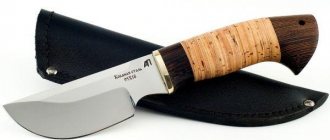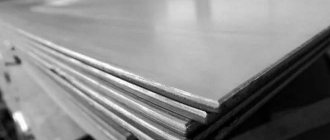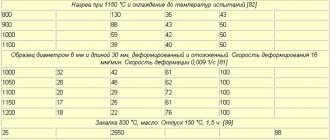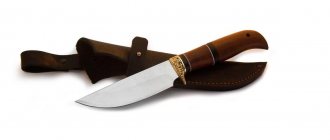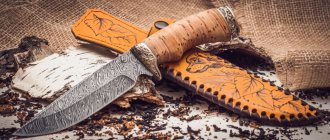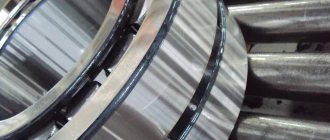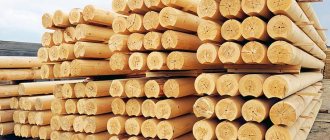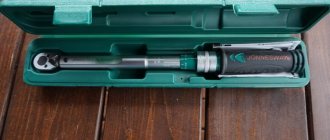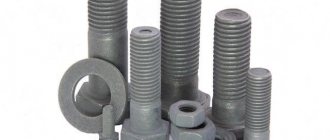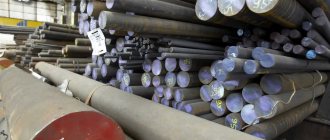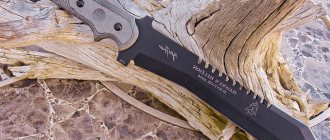For the manufacture of knives, high-quality metal is used, which is distinguished by increased strength and durability. These are the characteristics that U8 carbon steel has. Blades, machetes, decorative swords, and kitchen knives are made from it. Products made from this alloy have an impressive appearance, are universal in use, and easy to sharpen.
Steel U8 zone hardening.
Characteristics for knives
Alloy U8 belongs to the group of tool carbon steels. The carbon content in it reaches 0.83%. This element gives the steel increased strength and the ability to withstand significant vibration and mechanical loads. It is used to make household and utility knives, knives for fishermen and hunters, axes, machetes, and decorative weapons.
pros
Advantages of U8 steel:
- hardness (58-60 on the Rockwell scale) – ensured by the technology of stage-by-stage heat treatment of steel;
- strength - knives are capable of cutting ropes and ropes, opening cans, breaking bones;
- The sharpness of the blade is maintained for a long time due to the hardness of the metal. For sharpening, standard abrasive stones are used;
- heat resistance - even with intense work, the knife does not heat up, which prevents deformation of the steel;
- resistance to cracking. The alloy is characterized by reduced brittleness, so even under significant vibration loads the metal does not crack. When knives made of U8 steel fall, there is no danger of damaging the blade.
Minuses
Knives made of U8 steel also have a number of disadvantages:
- low resistance to corrosion. With constant contact with water, the surface of the blade gradually darkens;
- the need for regular care. After each use, the knife should be wiped dry and lubricated with oil.
A knife made of U8 steel is a durable, sharp and reliable blade. Its main drawback is its susceptibility to corrosion, which is easily eliminated by regular maintenance, which, as a rule, does not cause difficulties for owners.
Characteristics and properties
Having in its chemical composition 0.75...0.85% carbon, as well as a small amount of other elements - silicon, manganese, chromium, nickel and copper - U8 steel is ectectoid. With reduced manganese and silicon contents, the critical cooling rate always increases. Therefore, in practice, U8 steel is used only for the manufacture of metalworking tools with small overall dimensions. Hardening of steel of this type allows the use of very harsh cooling media (water or aqueous solutions of salts). Thus, this steel is not hardenable: the core remains viscous, and the hardness obtained as a result of preliminary annealing of the workpieces remains almost the same.
Scheme of structural transformations of U8
Quenching in water also has other negative consequences - with an increase in the cooling rate, the structure of the steel remains coarse-grained. During further processing (for example, forging), this feature can cause cracking of the forging, especially at significant degrees of deformation. Often, when quenched in water, the product loses its dimensions and warps, which forces additional calibration of the tool.
It should be noted that the eutectic for U8 steel is already pure austenite at 723 °C without any signs of ferrite. All this influences the optimal choice of heat treatment modes.
The temperature of the critical points of U8 steel is:
- The beginning of the austenitic transformation from the initial pearlite when heated is 720 °C.
- The end of the austenitic transformation is 740 °C.
- The temperatures at which the transformation of austenite into pearlite begins and ends upon cooling coincide and are within 700 °C.
- The martensitic transformation, starting at 810 °C, ends at 245 °C.
Download GOST 1435-99 “Rods, strips and coils of non-alloy tool steel”
Hardness of steel after heat treatment
Which knives are best to use for?
Due to its advantages, U8 steel is universal in use. Therefore, various cutting tools are made from it: from cutlery to axes, saws and chisels. In the case of knives, it is optimal to use two types for making.
Household
This group includes various cutting tools that can be used for repairs, in the forest, garage, workshop. They are unpretentious, durable, and retain their sharpness for a long time. Therefore, they are in demand among travelers, lovers of hunting, fishing, and outdoor activities.
Their blades are well balanced and fit comfortably in the hand. At the same time, they cope with different tasks: they are able to cut a rope, thick rope, branch, sharpen stakes, cut wire, and can act as a wedge for cracks. When working, you don’t have to worry about damaging the blade: the strength of the metal is so high that scratches don’t even form on the surface of the steel.
Household
Every housewife has such products in her kitchen. Depending on the size, shape and thickness of the blade, they can be designed for slicing meat and fish, vegetables and steak, and cheese. Also distinguished are sirloin, boning, and oyster. All these products can be made of U8 steel.
In this case, they will have an attractive appearance, strength and wear resistance. In addition to professional chef's knives, the household group also includes table knives. Low-hardness steel (HRC 45-50) is used for their manufacture. Pocket and folding knives are in great demand. They are distinguished by functionality, convenience and long service life.
Household knife made of U8 steel.
U8 steel is suitable for the manufacture of both household and utility knives of various types. Ease of processing allows you to give the product any shape and thickness, while maintaining strength and hardness. This explains the range of cutting tools made from this alloy.
Application area
U8a steel is used in most cases to obtain the working surface of cutting tools. Despite its relatively high temperature resistance, this metal is used in most cases for the manufacture of tools that do not heat up during use. An example would be:
- Chisels.
- Chisels.
- Saws.
- Cleavers.
- Axes.
- Hammers.
Today, U8 and U8a have found application in the production of plumbing tools. As previously noted, metal is intended not only for the manufacture of tools, but also various wear-resistant parts. Springs, rollers, and simple gauges can be made using such steel.
Another common use for the metal is in the manufacture of cold heading dies. Such tool steel is suitable for making dies due to its high strength and impact resistance.
As the results of the tests show, when heated, U8 and U8a quickly begin to lose their strength and wear resistance. Therefore, today they are practically not used in the manufacture of cutters and milling cutters.
Chemical composition and processing process
The name U8 indicates that the alloy contains carbon in the amount of 0.76-0.83% . The main share (97%) is iron. Among other additives:
- manganese (0.17-0.33%) – reduces ductility, increasing the hardness of the metal;
- silicon (0.17-0.33%) – is responsible for the elasticity of the alloy, its cooling rate, and resistance to moisture;
- sulfur (0.28%) – increases the abrasion resistance of the blade and the quality of its sharpening;
- nickel (0.25%) – increases resistance to destruction from corrosion;
- chromium (0.2%) – promotes an increase in strength, strength, and corrosion resistance;
- phosphorus (0.03%) – a high content of this element makes the metal brittle;
- copper (0.25%) – is responsible for corrosion resistance.
To give U8 steel the declared characteristics, the alloy is subjected to special heat treatment. During intermittent hardening, the workpieces are heated to a temperature of 780C, then cooled in water to 400C.
Chemical composition table.
Further cooling is carried out in containers with oil, which slows down the process, reducing structural stress in the metal. As a result, blanks for making knives acquire increased strength, hardness, and resistance to impacts and damage.
U8 (U8A) carbon tool steel
Analogs, Substitutes
Steel U7, U7A, U10, U10A. Foreign analogues for U8 steel: C80W (Europe), SKC3 (Japan). Foreign analogues for U8A steel: C80W1 (Europe), W108 (USA).
Decoding
The letter Y in the designation and the number following it indicate the average carbon content in steel in tenths of a percent. In U8 steel according to GOST 1435-99, the carbon content ranges from 0.75-0.84%.
If the letter A is present in the steel designation, for example U8A, then this letter indicates that the steel is high quality.
The presence of the letter G in the marking means a high content of manganese.
Application of U8
U8 steel is used in tools operating in conditions that do not cause heating of the cutting edge: milling cutters, countersinks, longitudinal and circular saws, chisels, chisels, knurling rollers, punches, blades of scissors for cutting metal, axes, chisels, combination pliers, side cutters.
Weldability
U8 steel is not used for welded structures. Welding method KTS (Contact Spot Welding)
Characteristics
Density ρп kg/cm3 at test temperature, °С
| Steel | 20 | 100 | 200 | 300 | 400 | 500 | 600 | 700 | 800 | 900 |
| U8, U8A | 7839 | 7817 | 7786 | 7752 | 7714 | 7676 | 7638 | 7600 | 7852 | — |
Thermal conductivity coefficient λ W/(m*K) at test temperature, °C
| Steel | 20 | 100 | 200 | 300 | 400 | 500 | 600 | 700 | 800 | 900 |
| U8, U8A | — | 49 | 46 | 42 | 38 | 35 | 33 | 30 | 24 | 25 |
Electrical resistivity ρ, nOhm*m at test temperature, °C
| Steel | 20 | 100 | 200 | 300 | 400 | 500 | 600 | 700 | 800 | 900 |
| U8, U8A | — | 230 | 305 | 395 | 491 | 625 | 769 | 931 | 1129 | 1165 |
Modulus of normal elasticity (Modulus of elasticity) E, GPa, at test temperature, °C
| Steel | 20 | 100 | 200 | 300 | 400 | 500 | 600 | 700 | 800 | 900 |
| U8 | 209 | 205 | 199 | 192 | 185 | 175 | 166 | — | — | — |
| U8A | 209 | 205 | 199 | 192 | 185 | 175 | 166 | — | — | — |
Modulus of elasticity in torsional shear G, GPa, at test temperature °C
| Steel | 20 | 100 | 200 | 300 | 400 | 500 | 600 | 700 | 800 | 900 |
| U8 | 81 | 80 | 77 | 74 | 71 | 67 | 62 | — | — | — |
| U8A | 81 | 80 | 77 | 74 | 71 | 67 | 62 | — | — | — |
Specific heat capacity c, J/(kg*K), at test temperature, °C
| 20-100 | 20-200 | 20-300 | 20-400 | 20-500 | 20-600 | 20-700 | 20-800 | 20-900 | 20-1000 |
| 477 | 511 | 528 | 548 | 565 | 594 | 624 | 724 | 724 | 703 |
Critical point temperature
| Ac1 | Acm | Ar1 | Mn |
| 730 | 765(112) | 700 | 245 |
Chemical composition, % (GOST 1435-99)
| Steel | C | Mn | Si | S | P | Cr | Ni | Cu |
| no more | ||||||||
| U8 | 0,75-0,84 | 0,17-0,33 | 0,17-0,33 | 0,028 | 0,03 | 0,12-0,4 | 0,12-0,25 | 0,2-0,25 |
| U8A | 0,75-0,84 | 0,17-0,28 | 0,17-0,33 | 0,018 | 0,025 | 0,12-0,4 | 0,12-0,25 | 0,2-0,25 |
| U8G | 0,8-0,9 | 0,33-0,58 | 0,17-0,33 | 0,028 | 0,03 | 0,12-0,4 | 0,12-0,25 | 0,2-0,25 |
| U8GA | 0,8-0,9 | 0,17-0,28 | 0,17-0,33 | 0,018 | 0,025 | 0,12-0,4 | 0,12-0,25 | 0,2-0,25 |
Hardness of steel after heat treatment (GOST 1435-90)
| Delivery status | Hardness |
| Heat treated steel | Quenching from 780-800 °C in water |
| Before HB 187 | St. HRСе 63 |
Mechanical properties of the tape (GOST 2283-79)
| Delivery status | Section, mm | σin MPa, no more | δ5, (δ4), %not less |
| Cold-rolled annealed strip | 0,1-1,5 | 650 | 15 |
| 1,5-4,0 | 750 | 10 | |
| Cold-rolled, cold-worked strip, strength class: | |||
| H1 | 0,1-4,0 | 750-900 | — |
| H2 | 900-1050 | — | |
| H3 | 0,1-4,0 | 1050-1200 | — |
| Annealed tape of the highest quality category | 0,1-4,0 | 650 | 15 |
Steel hardness depending on tempering temperature
| tref., °С | Hardness HRCе |
| 160-200 | 61-65 |
| 200-300 | 56-61 |
| 300-400 | 47-56 |
| 400-500 | 37-47 |
| 500-600 | 29-37 |
Note: hardening at 780-800 °C in water.
Mechanical properties depending on test temperature
| tsp, °С | σ0.2, MPa | σв, MPa | δ5, % | ψ, % | Hardness HB |
| Annealing or normalization | |||||
| 100 | — | 710 | 17 | 24 | 195 |
| 200 | — | 640 | 15 | 15 | 205 |
| 300 | — | — | 17 | 16 | 205 |
| 400 | — | — | 19 | 23 | 190 |
| 500 | — | 500 | 23 | 29 | 170 |
| 600 | — | 370 | 28 | 39 | 150 |
| 700 | — | 255 | 33 | 50 | 120 |
| Hardening at 780 °C in oil; tempering at 400 °C (smooth samples with a diameter of 6.3 mm) | |||||
| 20 | 1230 | 1420 | 10 | 37 | — |
| -40 | 1270 | 1450 | 11 | 36 | — |
| -70 | 1300 | 1470 | 12 | 35 | — |
| A sample with a diameter of 5 mm and a length of 25 mm, deformed and annealed. Deformation speed 10 mm/min; strain rate 0.007 1/s | |||||
| 700 | — | 105 | 58 | 91 | — |
| 800 | — | 91 | 58 | 100 | — |
| 900 | — | 55 | 62 | 100 | — |
| 1000 | — | 33 | 62 | 100 | — |
| 1100 | — | 21 | 80 | 100 | — |
| 1200 | — | 15 | 69 | 100 | — |
Technological properties
Forging temperature, °C: beginning 1180, end 800. Sections up to 100 mm are cooled in air, sections 101-300 mm are cooled in a pit. Cutting machinability - Kv tv.spl = 1.2 and Kv b.st = 1.1 at HB 187-227. Tendency to temper brittleness - not prone. Flock sensitivity - not sensitive.
Find out more
Steel 25 structural carbon steel…
U12, U12A carbon tool steel…
Carbon tool steel…
Steel 40 structural carbon quality…
